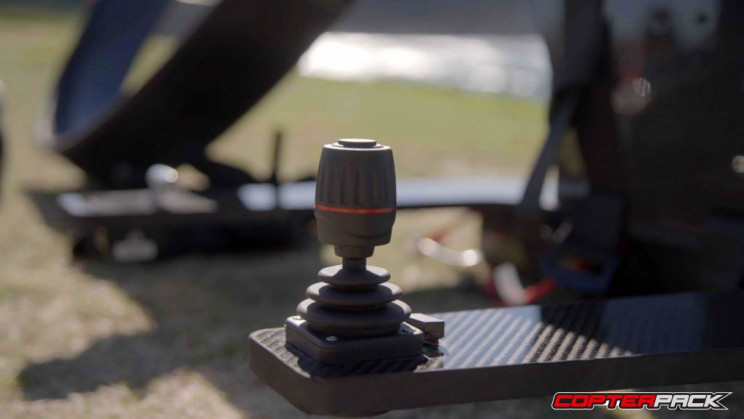An Australian startup has recently released footage of its new all-electric personal flying machine. Called ‘CopterPack‘, this interesting innovation builds on a long history of our species’ quest to take to the air.
While it is not the first personal flying device unveiled over the years, its all-electric setup makes it cleaner and safer to use. In an interesting video released on YouTube by CopterPack, the device seems intuitive to use and is, apparently, very stable, albeit a little bulky.
It seems, on the surface at least, to effectively be a manned drone.
According to the team behind the device, it uses just two rotor blades to lift a full-grown human off the ground. Each rotor is around 3 feet (90cm) in diameter. It also comes with a built-in self-leveling autopilot.
The rotors are connected via carbon fiber honeycomb tubes to a rigid backpack with what, are apparently, underslung battery packs. It also comes with a pair of handy flat armrests that presumably have the main thrust and flight controls for the backpack.
Other than the very scarce information provided on their website, and YouTube video, the device’s other specs can only be guessed at this stage.

Stable flight is achieved by twisting the rotors to vector its thrust — unlike quadcopter drones that can vary each rotor’s speed.
The video demonstrates the CoptorPack’s apparent flight characteristics with apparent seamless forward and sideways capabilities and easy yaw control. It seems to also be able to lift the pilot to some impressive heights above the ground with little to no trouble.
Since the device is battery powered, presumably using lithium-ion batteries, it probably doesn’t provide the operator an extended flight time in the air. This is presumably the reason behind the bulky backpack and large rotor blades. Though, as we previously mentioned, no details have yet been revealed.
Large diameter rotors are, after all, more efficient than smaller ones in situations like this. If the batteries were swapped out with more efficient and energy-dense alternatives, like solid-state batteries, future models could, conceivably, be made more compact.
One problem with the CopterPack does seem to be its potential for safety. With only two rotor blades there is no room for error or redundancy. The pilot is effectively gambling with his life that the rotor support arms don’t fail mid-flight.
CopterPack is the latest in a long line of personal flying machines
This is not unique to this latest variation on the theme of personal flying machines, however. Earlier this year, the news was announced of the passing of one of the world’s most prominent “jetman” pilots who died when his parachute failed to deploy.
CopterPack is not the first time we’ve seen personal flying machines. Most of you are probably familiar with “Jetpack Man” in the U.S. Other devices have been revealed like the British Gravity Industries’ jetpack being trialed by the Royal Navy and some emergency services.
However, what sets this new device apart is the way it is powered. Most we have seen so far have been combustion-based propulsion (jet or otherwise). With a growing interest in drone technology, this new drone-like personal flying suit may prove to be a game-changer.
Watch this space.





More Stories
The Oracle 9i OCA and OCP Certifications Are Being Retired – What Does That Mean to Me?
Myth Busted: Cell Phone Tower Radiation Does Not Cause Harm
The Science Of Psychology – An Oxymoron?